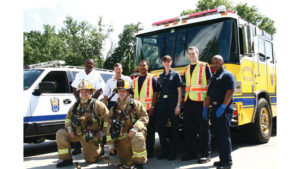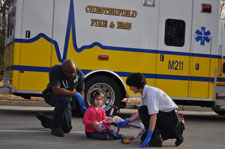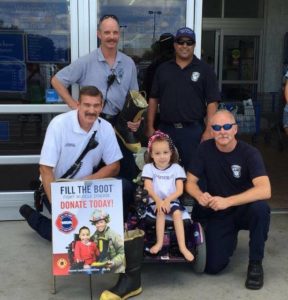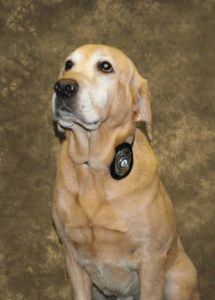By: Robert Avsec, Executive Fire Officer
One of my most precious accomplishments in my lifetime thus far was 26-year “first career” with the Chesterfield County (Va.) Fire and EMS Department (CFEMS). Besides my own personal accomplishments while a member of that organization, I always had a deep sense of pride for being a member of a progressive and forward-thinking organization.
In a post from a couple of years ago, A Tale of Customer Care, I wrote about one aspect of  CFEMS that was truly “groundbreaking” at the time, the department’s Citizens Against Residential Emergencies (CARE) program. This customer care program was a success then and continues to meet critical needs for the department and the citizens of Chesterfield County.
CFEMS that was truly “groundbreaking” at the time, the department’s Citizens Against Residential Emergencies (CARE) program. This customer care program was a success then and continues to meet critical needs for the department and the citizens of Chesterfield County.
CARE Today
I recently spoke with one of my former CFEMS colleagues, Robby Dawson, Assistant Fire Chief and Fire Marshal at CFEMS, to get an update on the customer care program. “CARE continues to help us meet critical needs that we might not be able to take care of within our operational budget,” said Dawson.
According to Dawson, “I think the biggest reason why CARE continues to be successful is that we’ve stayed focused on the four core goals contained in the program’s By-Laws.” Those four goals are:
- Assisting citizens before or following an emergency;
- Providing fire and life safety educational materials and equipment for the department;
- Purchasing critical equipment for CFEMS when the budget is tight; and
- Funding organizational professional development.
 “CARE’s biggest success as you wrote in your first blog, assisting county citizens before or after an emergency, is still the program’s greatest success story,” said Dawson. “We participate in the United Way Campaign and citizens can earmark their United Way contribution to go to CARE.”
“CARE’s biggest success as you wrote in your first blog, assisting county citizens before or after an emergency, is still the program’s greatest success story,” said Dawson. “We participate in the United Way Campaign and citizens can earmark their United Way contribution to go to CARE.”
Those funds from the United Way go into a line item in the CARE budget that specifically funds the hotel and restaurant voucher program and the provision of fire companies with cash on the apparatus to provide on-the-spot assistance to citizens.
Program Documentation
“When I took over the program from Mark Nugent [retired battalion chief one of the program’s creators], CARE was doing a lot of good things, but we were lacking on some of the administrative processes that the program needed,” said Dawson. “Mark and others, like Gene Reams [retire battalion chief] were the real pioneers that got this thing going and helped make CARE what it is today. Going forward we recognized that we needed to find ways to maintain the program’s good work and ensure its continued success for the future.”
One of the more significant aspects that needed to be improved upon, according to Dawson, was the documentation for the customer care program. “That’s where we went back to the By-Laws. We took a good look at how the program was currently meeting all of the four major goals and how we needed to document those efforts,” said Dawson.
Governance and Oversight
“We also put greater emphasis on having more active and inclusive Board of Directors, said Dawson. “That Board now includes retired CFEMS members and community business  leaders.” This more active and engaged Board of Directors is the entity that ultimately approves funding requests made upon the program. “Having that Board really creates a good “firewall” between CFEMS and CARE and makes for better transparency about how CARE funds are spent,” said Dawson.
leaders.” This more active and engaged Board of Directors is the entity that ultimately approves funding requests made upon the program. “Having that Board really creates a good “firewall” between CFEMS and CARE and makes for better transparency about how CARE funds are spent,” said Dawson.
Organizational Professional Development
Of those four major program goals, Dawson said that professional development the one where CARE was “missing the mark.” According to Dawson, training outside of the realm of CFEMS’ Training Division for professional development had fallen off significantly as county funding to the department declined. “We could no longer send people to educational conferences like FRI (Fire Rescue International), FDIC (Fire Department Instructors Conference) or the NFPA (National Fire Protection Association) conference,” said Dawson.
When a potential corporate donor approached Nugent with a proposal for a significant monetary donation, he asked them what they would like to fund and they said, “What do you need?” Nugent told them that due to lack of funds, organizational leaders were unable to attend state and national conferences, both for professional development and to represent Chesterfield County’s interests at national conferences like the NFPA conference. The donor said, “Use this for that.”
“So that money now, year after year, has been earmarked to fund organizational professional development,” said Dawson. “Now that the budget crunch has kind of “eased up”, I’ve kind of taken the approach [as the CARE manager for CFEMS] that this [organizational professional development] is a partnership between the county and CARE. So in some cases the county will pay the registration fees while CARE with fund the travel and lodging.” Doing so has enabled Dawson and CFEMS to “stretch” those CARE funds dedicated to professional development.
Program Challenges
When asked about the biggest challenges for the CARE program, Dawson cited two in particular: the costs associated with documentation and potential “scope creep.” According to Dawson, the annual third-party audit of the CARE financial records alone is roughly $6,000. “It’s by far our greatest administrative expense, but it’s totally necessary and required for CARE to maintain it 501(c) non-profit tax status,” said Dawson.
Another challenge is the potential for “scope creep” regarding the four major goals of CARE. “I’ll get a request for funding from time to time, that when I review it against those goals, that gives me cause to wonder how does this match one of those goals,” said Dawson. “In those situations I take the request to the Board of Directors and let them make the decision. I think that helps maintain higher degree of transparency because it’s not the department making the decision, it’s the Board.”
Want to learn how you can bring a program like CARE to your community? Contact Fire Marshal Dawson at: [email protected]
This post is dedicated to the memory of the late Hero, CFEMS’ first canine arson investigator. RIP Hero!
 Fire & EMS Leader Pro The job of old firefighters is to teach young firefighters how to become old firefighters!
Fire & EMS Leader Pro The job of old firefighters is to teach young firefighters how to become old firefighters!